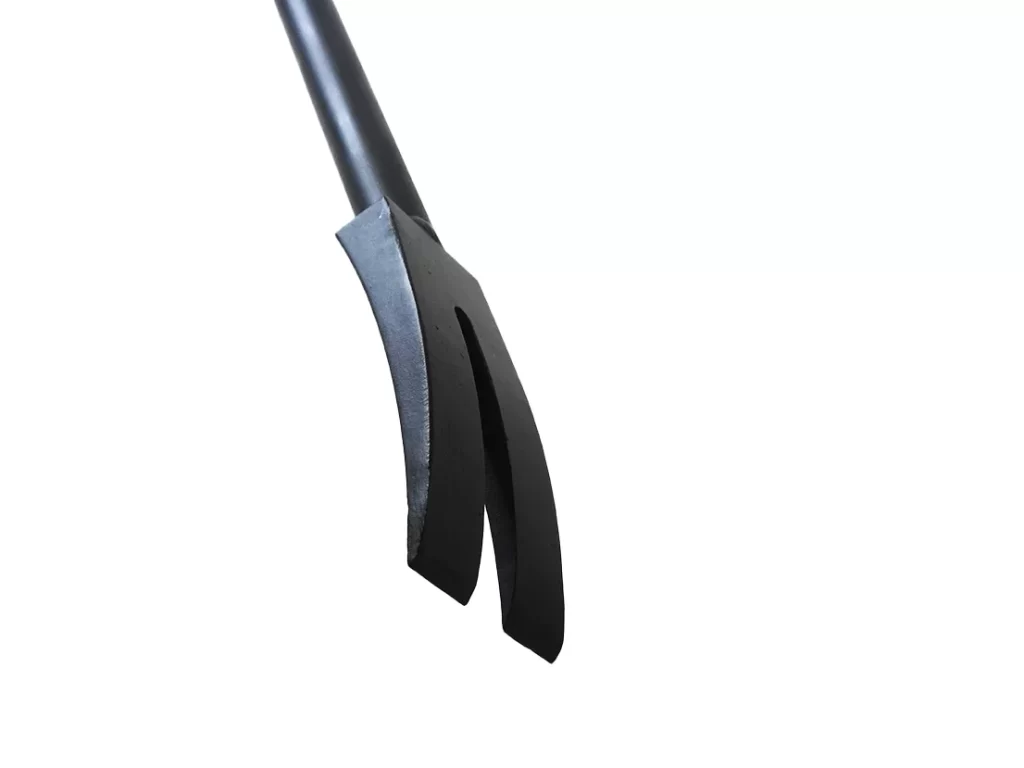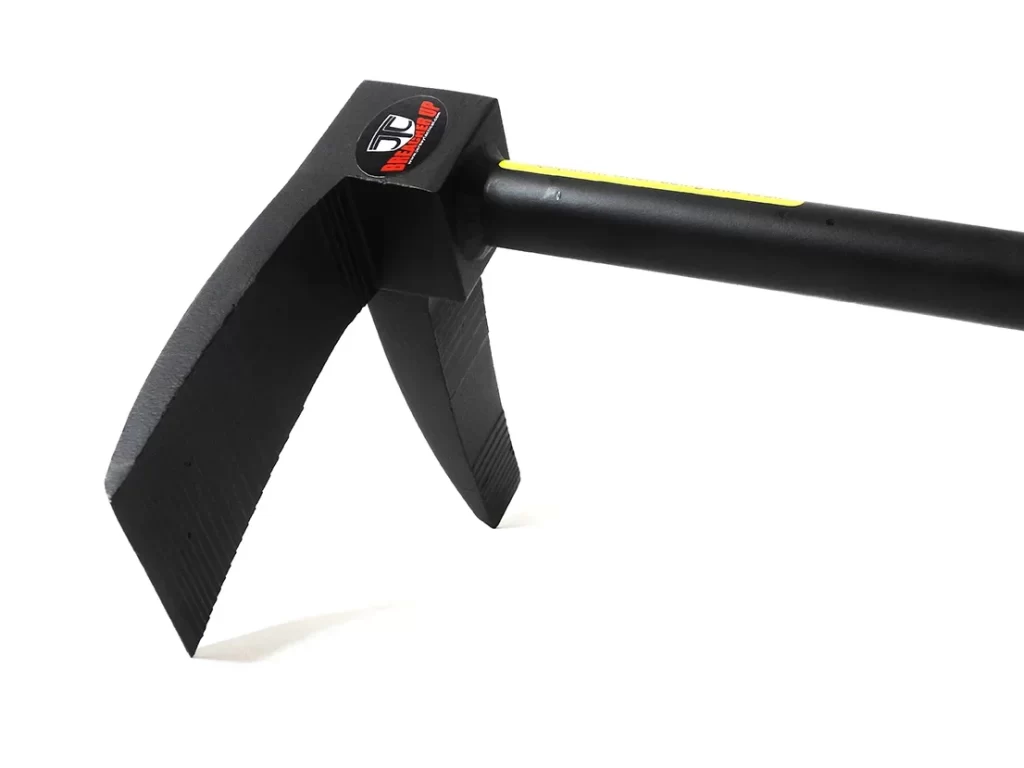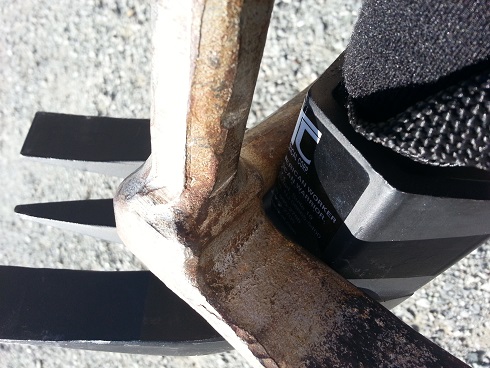The fork on a Halligan bar is a vital feature that significantly enhances its utility in breaching and forcible entry scenarios. This component consists of two prongs that are specifically designed for prying and manipulating entry points like doors, hinges, and locks. The fork is ideal for wedging into tight spaces, such as between a door and frame, or around padlocks, to create leverage for breaking or prying open barriers. It can also be used to pull hinges, allowing for quick, effective access in emergency situations.
Key Uses of the Fork:
- Prying and Spreading: The fork allows responders to pry open doors, windows, and other entry points by using the leverage provided by its length and design. Once wedged into a tight space, such as between a door and its frame, the fork can be used to create a gap that allows for further breaching.
- Removing Hinges and Hardware: The fork is especially useful for pulling hinges. By sliding the prongs around a hinge or padlock, responders can use force to bend or remove the hardware, bypassing locks or securing mechanisms.
- Gap Creation for Tool Insertion: The fork often serves as the first step in the entry process. By creating an initial gap, it allows other tools, such as the adze or pike end of the Halligan bar, to be more effectively inserted into the breach for further prying, cutting, or breaking.
- Multipurpose Hooking and Pulling: In addition to prying, the fork can be used to pull objects or materials out of place. For example, it can help with the removal of boards, locks, or debris in a rescue situation.
In high-stress scenarios, such as firefighting or tactical breaching, the fork’s design makes it incredibly efficient for applying mechanical advantage in challenging entry conditions. Whether it’s breaching a reinforced door or removing heavy-duty locks, the fork is an indispensable part of the Halligan bar’s versatility, allowing first responders to perform their duties quickly and effectively.



